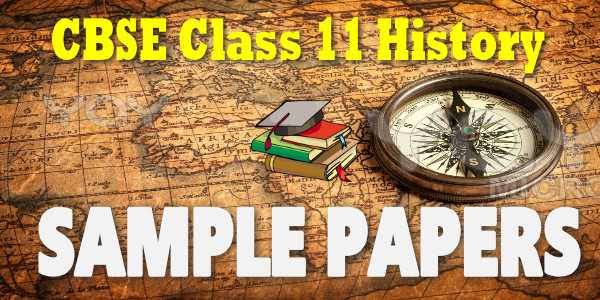Class 11 History – Mid Term Sample Paper (CBSE Pattern)
Time: 3 Hours Maximum Marks: 80
Sample Paper 1
Section A
MCQs (Q1–21, 1 mark each )
Q1. Which river was crucial for the prosperity of Mesopotamia?
(A) Nile
(B) Tigris
(C) Indus
(D) Yellow River
Q2. The earliest form of writing in Mesopotamia was:
(A) Hieroglyphics
(B) Cuneiform
(C) Sanskrit uh
(D) Latin
Q3. Assertion (A): The Roman Empire depended heavily on trade across the Mediterranean.
Reason (R): The Mediterranean Sea acted as a unifying factor for economic activities.
(A) Both A and R true, R correct explanation of A
(B) Both A and R true, R not correct explanation of A
(C) A true, R false
(D) A false, R true
Q4. Match the following:
- Charlemagne – (a) Mongol Empire
- Genghis Khan – (b) Holy Roman Empire
- Constantine – (c) Christianity
(A) 1-b, 2-a, 3-c
(B) 1-c, 2-a, 3-b
(C) 1-b, 2-c, 3-a
(D) 1-a, 2-b, 3-c
Q5. Picture-based: (Image of Mesopotamian tablet with wedge-shaped signs).
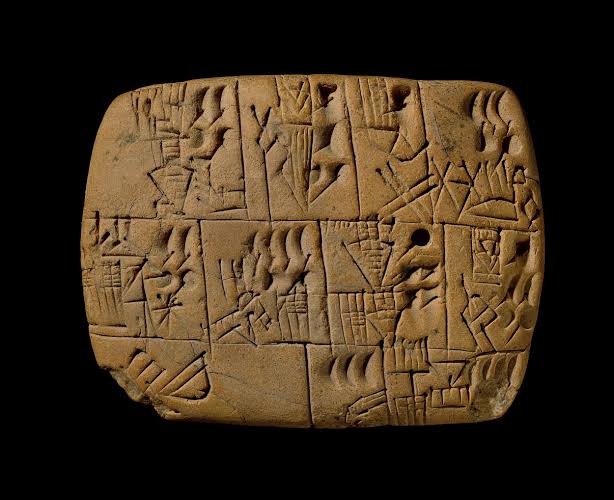
What is depicted in the image?
(A) Roman Law
(B) Cuneiform Writing
(C) Latin Literature
(D) Greek Alphabet
Q6. Who introduced feudalism in England?
(A) Charlemagne
(B) William the Conqueror
(C) Julius Caesar
(D) Constantine
Q7. The equestrian class in Roman society consisted of:
(A) Soldiers
(B) Merchants and landowners
(C) Slaves
(D) Senators
Q8. The Baghdad city was built by:
(A) Harun al-Rashid
(B) Al-Mansur
(C) Genghis Khan
(D) Justinian
Q9. The feudal system was based on:
(A) Money economy
(B) Land grants
(C) Trade routes
(D) Industrialization
Q10. The Mongols established their capital at:
(A) Karakorum
(B) Baghdad
(C) Constantinople
(D) Rome
Q11. The first city-states of Mesopotamia emerged in:
(A) Egypt
(B) Sumer
(C) Akkad
(D) Babylon
Q12. Who divided the Roman Empire into East and West?
(A) Augustus
(B) Constantine
(C) Diocletian
(D) Julius Caesar
Q13. Which one of the following is NOT a feature of Mesopotamian urban centers?
(A) Temples
(B) Libraries
(C) Ziggurats
(D) Skyscrapers
Q14. Assertion (A): Feudal lords maintained private armies.
Reason (R): There was strong centralized monarchy in medieval Europe.
(A) A true, R false
(B) Both A and R true
(C) Both A and R false
(D) A false, R true
Q15. Match the following:
- Ziggurat – (a) Mesopotamia
- Coliseum – (b) Rome
- Abbey of Cluny – (c) Europe (Monastic)
(A) 1-a, 2-b, 3-c
(B) 1-b, 2-c, 3-a
(C) 1-c, 2-a, 3-b
(D) 1-b, 2-a, 3-c
Q16. The Roman Emperor Constantine is known for:
(A) Legalizing Christianity
(B) Dividing the Empire
(C) Establishing Senate
(D) Writing Roman Law
Q17. Who wrote about the Mongols in Travel Accounts?
(A) Al-Biruni
(B) Marco Polo
(C) Pliny
(D) Caesar
Q18. Baghdad flourished during:
(A) Roman Republic
(B) Byzantine Empire
(C) Abbasid Caliphate
(D) Mongol Empire
Q19. The medieval European economy was primarily:
(A) Industrial
(B) Agricultural
(C) Scientific
(D) Commercial only
Q20. Which Roman ruler was assassinated in 44 BCE?
(A) Augustus
(B) Julius Caesar
(C) Constantine
(D) Nero
Q21. Picture-based: (Image of Gothic Cathedral). Identify the style.
Also Watched This
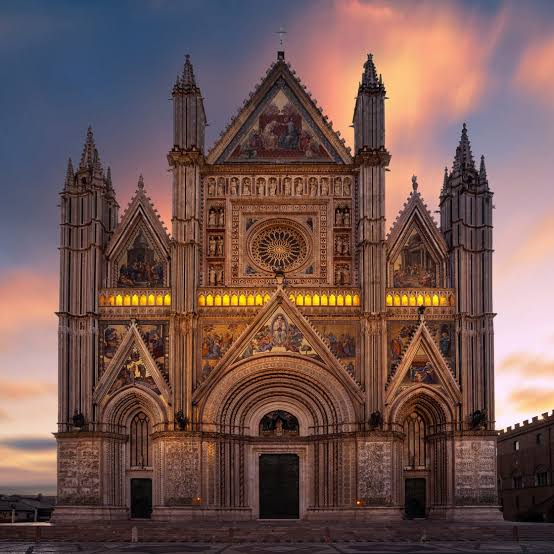
(A) Islamic
(B) Gothic
(C) Romanesque
(D) Mesopotamian
Section B
Short Answer Questions (Q22–27, 3 marks each )
Q22. Explain the importance of temples in Mesopotamian city life.
Q23. State three main classes of Roman society.
Q24. Give three main features of feudal society in Europe.
Q25. Write any three contributions of the Mongols to trade and communication.
Q26. Describe three features of the Roman Senate.
OR
Describe three achievements of Constantine.
Q27. Explain the significance of writing in Mesopotamia.
Section C
Long Answer Questions (Q28–30, 8 marks each )
Q28. Discuss the development of writing in Mesopotamia and its uses.
OR
Describe the contributions of Mesopotamian civilization to the world.
Q29. Explain the social categories of the Roman Empire with examples.
OR
Discuss the main features of the Roman economy.
Q30. Describe the main features of the feudal system in medieval Europe.
OR
Explain the reasons for the decline of feudalism.
Section D
Source-Based Questions (Q31–33, 4 marks each )
Q31. Read the extract from NCERT (Writing and City Life):
“The system of writing was a significant cultural marker of Mesopotamian civilization. Tablets of clay were used to record transactions, and cuneiform signs were impressed on wet clay.”
(i) Which writing system is mentioned here? (1)
(ii) What were clay tablets used for? (1)
(iii) How did writing help Mesopotamian administration? (2)
Q32. Read the extract (An Empire Across Three Continents):
“The Roman Empire was one of the greatest political entities of the ancient world. It was politically stable and economically prosperous, but social inequalities persisted.”
(i) Which empire is being referred to here? (1)
(ii) What were the main features of its economy? (1)
(iii) Mention two inequalities of Roman society. (2)
Q33. Read the extract (The Three Orders):
“The three orders of European society were those who prayed, those who fought, and those who tilled. This division of society was considered natural and permanent.”
(i) Name the three orders. (1)
(ii) Which order controlled the land? (1)
(iii) Why was this system considered natural? (2)
Section E
Map-Based Question ( 5 marks)
On the given outline map of the world:
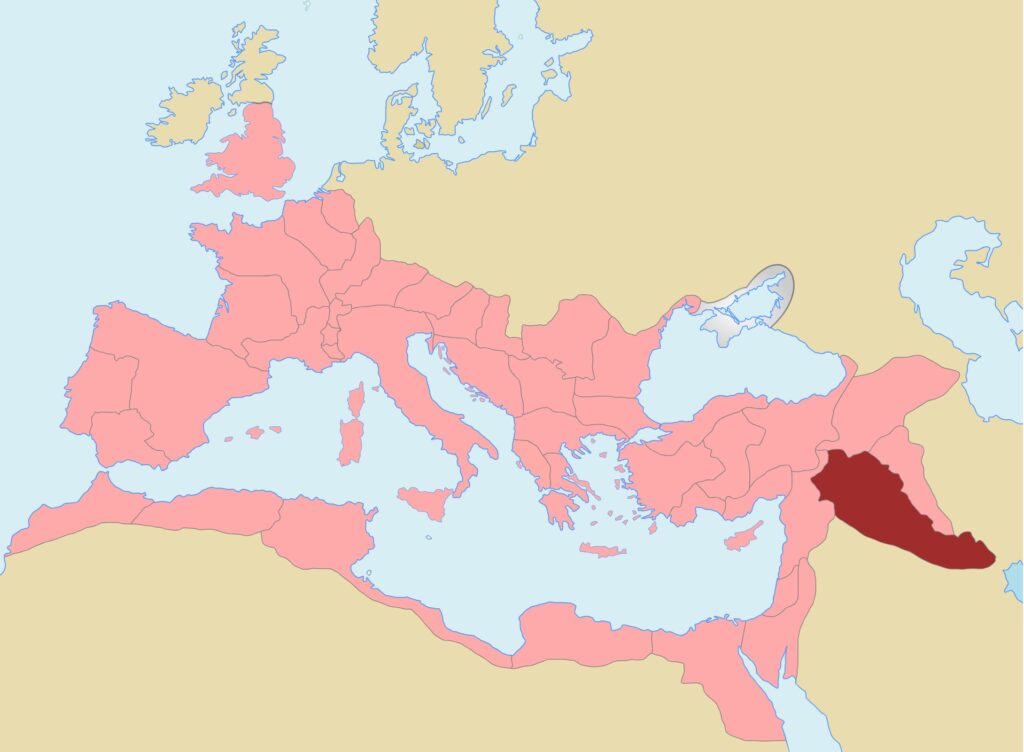
(A) Locate and label – Mesopotamia and Rome (2 marks)
(B) Locate and label any three of the following (3 marks):
- Karakorum
- Constantinople
- Baghdad
- Jerusalem
Sample Paper – 2
Class 11 History – Mid Term Examination
Maximum Marks: 80 Time: 3 Hours
Section A
MCQs (Q.1 – Q.21, 1 mark each)
Q1. Which civilization is associated with the city of Uruk?
(A) Harappan (B) Mesopotamian (C) Egyptian (D) Roman
Q2. The Roman currency was called:
(A) Dinar (B) Denarius (C) Dirham (D) Shekel
Q3. Assertion (A): The Mongols were originally nomadic pastoralists.
Reason (R): They depended on agriculture as their main occupation.
Choose: (A) A and R true, R correct explanation of A
(B) A and R true, R not correct explanation of A
(C) A true, R false
(D) A false, R true
Q4. Which French king had close ties with the Pope and the Church during the medieval period?
(A) Charlemagne (B) Louis IX (C) Philip IV (D) Henry II
Q5. Match the following:
(i) Cuneiform – (a) Rome
(ii) Senate – (b) Mesopotamia
(iii) Manor – (c) Europe
(iv) Steppe – (d) Central Asia
Codes: (i-b), (ii-a), (iii-c), (iv-d)
Q6. The system of large landed estates in medieval Europe was known as:
(A) Manor (B) Serfdom (C) Guild (D) Fief
Q7. Which famous traveler described the Mongol empire in detail?
(A) Al-Biruni (B) Marco Polo (C) Ibn Battuta (D) Fa-Hien
Q8. Picture-based: Identify this script.
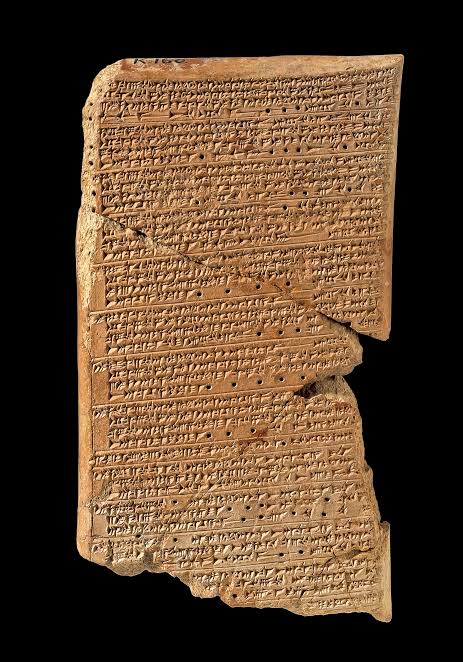
(A) Hieroglyphic (B) Cuneiform (C) (D) Pali
Q9. The Mesopotamians considered the king as:
(A) God (B) Representative of God (C) Chief Priest only (D) Philosopher
Q10. The division of Roman citizens into Patricians and Plebeians shows:
(A) Social inequality (B) Religious unity (C) Economic equality (D) Political democracy
Q11. The Nomadic tribes lived mostly in:
(A) Deserts (B) Forests (C) Steppes (D) Coastal regions
Q12. Which Roman emperor adopted Christianity?
(A) Augustus (B) Constantine (C) Nero (D) Trajan
Q13. Assertion (A): Mesopotamians traded with the Indus Valley.
Reason (R): Archaeologists found seals of Harappa in Mesopotamia.
Choose correct option: (A) Both A and R true; R explains A
(B) Both true, but R not correct explanation
(C) A true, R false
(D) A false, R true
Q14. Which Crusade captured Jerusalem in 1099 CE?
(A) First (B) Second (C) Third (D) Fourth
Q15. Match:
(i) Genghis Khan – (a) 1206 CE
(ii) Julius Caesar – (b) Rome
(iii) Hammurabi – (c) Mesopotamia
(iv) Vassals – (d) Feudal Europe
Q16. Serfs were bound to the:
(A) Manor (B) Senate (C) Monastery (D) Palace
Q17.The Roman Republic came into existence in:
(A) 509 BCE (B) 27 BCE (C) 312 CE (D) 476 CE
Q18 Picture based: Identify this monument:
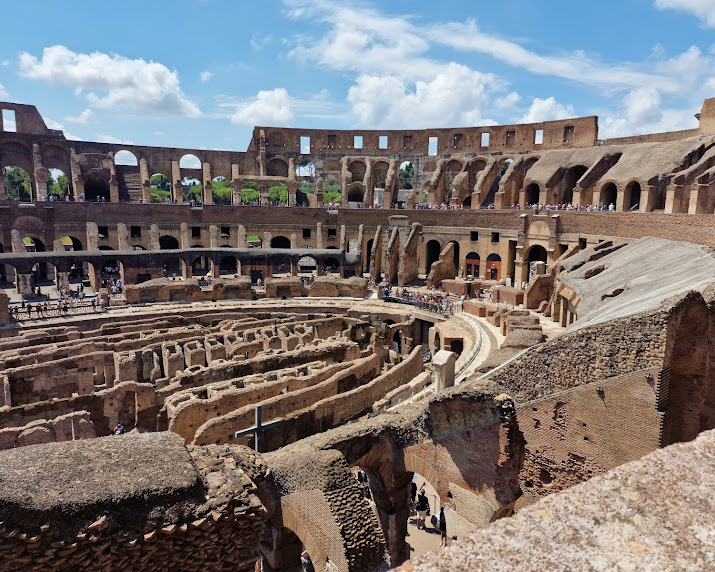
(A) Circus Maximus (B) Colosseum (C) Parthenon (D) Pantheon
Q19. Which was the most powerful institution in medieval Europe?
(A) Parliament (B) Church (C) King (D) Guilds
Q20. The earliest form of writing on Mesopotamian clay tablets recorded:
(A) Laws (B) Myths (C) Trade accounts (D) Epics
Q21. Nomadic military success depended mainly on:
(A) Horses (B) Iron swords (C) Farming skills (D) Diplomacy
Section B
Short Answer Questions (Q.22 – Q.27, 3 marks each )
Q22. Mention any three features of Mesopotamian urban life.
Q23. Write three achievements of Augustus Caesar.
Q24. How did Mongols promote trade across their empire? Give three points.
Q25. Explain three main features of Feudalism.
Q26. (Choice) Describe three methods of land measurement in Mesopotamia.
OR
Why was the Roman Empire considered a “slave society”? Give three reasons.
Q27. What role did monasteries play in medieval Europe? Write three points.
Section C: Long Answer Questions (Q.28 – Q.30, 8 marks each = 24 marks)
Q28. Explain the importance of writing in Mesopotamian civilization. (8 points)
OR
Discuss the significance of Roman law in unifying the empire. (8 points)
Q29. Describe the conquests and administration of Genghis Khan. (8 points)
OR
Explain the role of the Mongols in the integration of Eurasia. (8 points)
Q30. Examine the economic and social life of medieval European peasants. (8 points)
OR
Discuss the impact of the Crusades on Europe. (8 points)
Section D
Source-Based Questions (Q.31 – Q.33, 4 marks each )
Q.31 (From NCERT: Writing and City Life)
Source: “The Mesopotamian scribes used a reed stylus to make wedge-shaped impressions on clay tablets…”
Questions:
(i) What was the name of this script? (1)
(ii) Why were scribes important? (1)
(iii) How did writing help in administration? (2)
Q.32 (From NCERT: An Empire Across Three Continents)
Source: “The Roman peace (Pax Romana) ensured security, law and order, flourishing trade and communication…”
Questions:
(i) What does ‘Pax Romana’ mean? (1)
(ii) Who established it? (1)
(iii) Give two features of Pax Romana. (2)
Q.33 (From NCERT: The Three Orders)
Source: “The serfs cultivated strips of land and were bound to the manor. They could not leave without the lord’s permission…”
Questions:
(i) Who were serfs? (1)
(ii) What was their main restriction? (1)
(iii) Describe two hardships of their life. (2)
Section E
Map-Based Question (5 marks)
Q.34 On the outline map of the world:
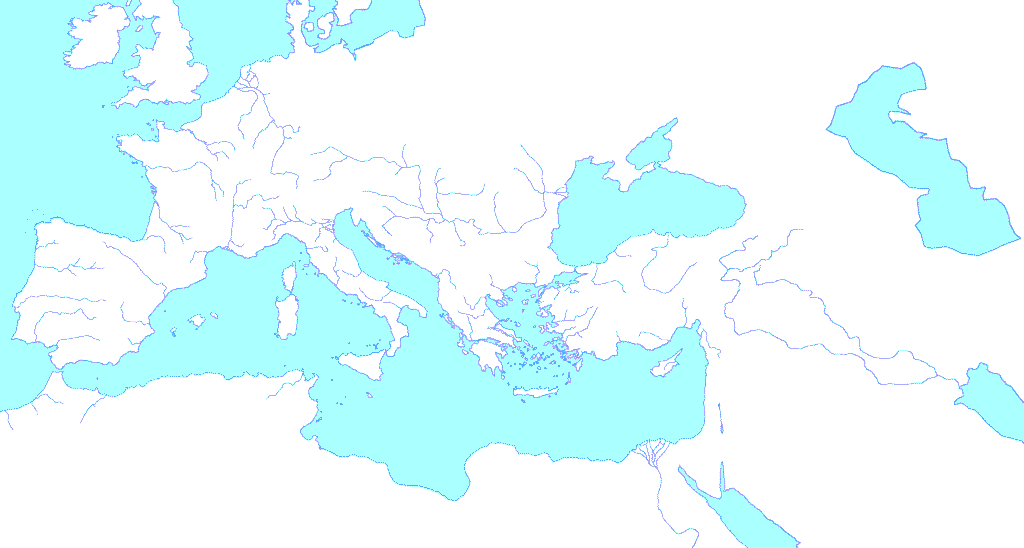
- Locate and label A: Rome and B: Baghdad. (2 marks)
- Mark and label any three of the following:
(i) Ur
(ii) Constantinople
(iii) Karakorum
(iv) Paris (3 marks)
Sample Paper – 3
Class 11 History – Mid Term Examination
Maximum Marks: 80 | Time: 3 Hours
Section A
MCQs (Q.1 – Q.21, 1 mark each)
Q1. Which river valley is called the “cradle of civilization”?
(A) Nile (B) Euphrates–Tigris (C) Indus (D) Huang He
Q2. The Roman Senate mainly represented:
(A) Slaves (B) Patricians (C) Plebeians (D) Soldiers
Q3. Assertion (A): The Mongols were skilled horsemen.
Reason (R): They introduced stirrups in warfare.
Options: A. A and R true, R explains A
B. A and R true, R not explains A
C. A true, R false
D. A false, R true
Q4. The system of loyalty and service in return for land in medieval Europe is called:
(A) Manor (B) Feudalism (C) Republic (D) Monarchy
Q5. Match:
(i) Ziggurat – (a) Rome
(ii) Tribune – (b) Mesopotamia
(iii) Khanate – (c) Mongols
(iv) Monastery – (d) Europe
Q6. The Roman Emperor who divided the empire into Eastern and Western halves:
(A) Nero (B) Augustus (C) Diocletian (D) Hadrian
Q7. The Mongols mainly lived in:
(A) Steppes of Central Asia (B) Deserts of Arabia (C) Mountains of Tibet (D) Forests of Europe
Q8. Picture based: Identify this structure.
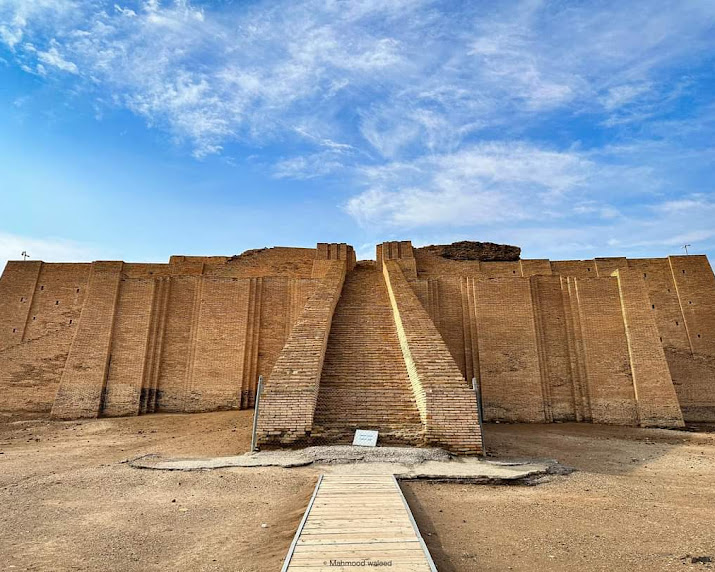
Options: (A) Pyramid (B) Ziggurat (C) Colosseum (D) Stupa
Q9. The first written legal code in Mesopotamia was by:
(A) Hammurabi (B) Sargon (C) Gilgamesh (D) Ashurbanipal
Q10. The Roman roads were called:
(A) Via Appia (B) Silk Road (C) Royal Road (D) Caravan Route
Q11. Assertion (A): Genghis Khan united the Mongol tribes.
Reason (R): He introduced hereditary monarchy.
Choose: (A) A and R true, R explains A
(B) Both true, but R not correct explanation
(C) A true, R false
(D) A false, R true
Q12. Who was the first Holy Roman Emperor crowned by the Pope?
(A) Charlemagne (B) Otto I (C) Philip II (D) Louis IX
Q13. Match:
(i) Clay tablets – (a) Mesopotamia
(ii) Gladiators – (b) Rome
(iii) Crusades – (c) Europe
(iv) Yasa law – (d) Mongols
Q14. Which Roman general crossed the Rubicon River in 49 BCE?
(A) Julius Caesar (B) Pompey (C) Augustus (D) Nero
Q15. The pastoral economy of Mongols was based on:
(A) Sheep and horses (B) Rice farming (C) Gold mining (D) Wheat farming
Q16. Who granted land to Vassals in feudal Europe?
(A) King (B) Pope (C) Peasant (D) Knight
Q17. Which epic mentions the flood story in Mesopotamian culture?
(A) Iliad (B) Gilgamesh (C) Odyssey (D) Mahabharata
Q18. Picture based: Identify this ruler.
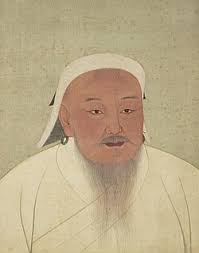
(A) Hammurabi (B) Julius Caesar (C) Genghis Khan (D) Charlemagne
Q19. Roman Republic was replaced by Empire in:
(A) 509 BCE (B) 27 BCE (C) 476 CE (D) 1453 CE
Q20. Medieval Europe’s agricultural innovations included:
(A) Iron plough and horse collar (B) Hydraulic machines (C) Steam engine (D) Gunpowder
Q21. Which factor weakened feudalism in Europe?
(A) Crusades (B) Black Death (C) Growth of trade (D) All of these
Section B
Short Answer Questions (Q.22 – Q.27, 3 marks each )
Q22. Mention three reasons why writing was important in Mesopotamia.
Q23. What was the role of Roman army in expansion of empire? Give 3 points.
Q24. Why were the Mongols feared across Eurasia? (3 points)
Q25. Write three differences between Lords and Vassals.
Q26. Choice: Describe any three scientific or mathematical contributions of Mesopotamia.
OR
Write three achievements of Julius Caesar.
Q27. Explain three reasons for decline of feudalism in Europe.
Section C
Long Answer Questions (Q.28 – Q.30, 8 marks each )
Q28. Explain the development of Mesopotamian cities. (8 points)
OR
Describe the role of trade and commerce in Roman economy. (8 points)
Q29. Describe the social and military organization of Mongols. (8 points)
OR
Examine the impact of Mongol rule on Russia and China. (8 points)
Q30. Discuss the three orders of medieval European society. (8 points)
OR
Explain the role of the Church in medieval Europe. (8 points)
Section D: Source-Based Questions (Q.31 – Q.33, 4 marks each = 12 marks)
Q.31 (NCERT – Writing and City Life)
Source: “Mesopotamian scribes produced dictionaries, copying out long lists of words in two or three languages…”
(i) Who were scribes? (1)
(ii) Why did they prepare dictionaries? (1)
(iii) How did such works help in preserving knowledge? (2)
Q32. (NCERT – An Empire Across Three Continents)
Source: “Slavery was an institution deeply rooted in Roman society. Slaves worked in households, mines and farms…”
(i) Who were slaves? (1)
(ii) Mention one work done by them. (1)
(iii) How important were slaves to Roman economy? (2)
Q33. (NCERT – The Three Orders)
Source: “Knights fought for their lords, who in turn owed allegiance to the king. This chain of obligation bound the feudal society…”
(i) Who were knights? (1)
(ii) Whom did they serve? (1)
(iii) Explain two features of feudal loyalty. (2)
Section E
Map-Based Question (5 marks)
Q.34. On the outline map of the world:
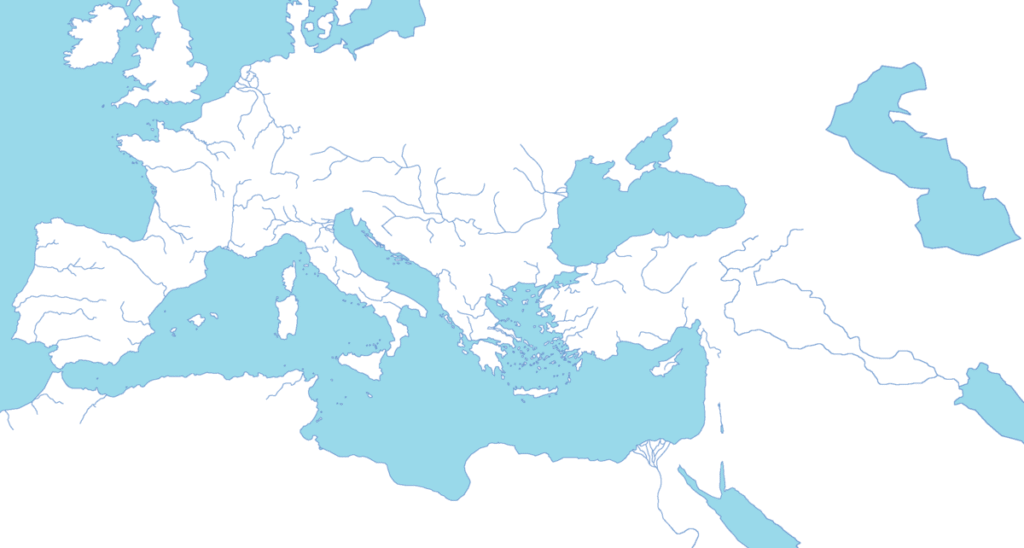
- Locate and label A: Uruk and B: Constantinople. (2 marks)
- Mark and label any three of the following:
(i) Carthage
(ii) Samarkand
(iii) Paris
(iv) Tigris River (3 marks)
Answer Key – Class 11 History Sample Paper 1
(With explanations and detailed answers)
Section A: MCQs (1 mark each)
Q1. Tigris
👉 Mesopotamia prospered because of the Tigris–Euphrates river system. These rivers provided fertile soil, irrigation, and trade routes.
Q2. Cuneiform
👉 The wedge-shaped cuneiform script was developed in Mesopotamia, one of the earliest forms of writing.
Q3. Option A
👉 Both the statement and reason are correct. Trade across the Mediterranean connected all parts of the Roman Empire. The sea acted as a unifying economic link.
Q4. Option A
👉 Charlemagne = Holy Roman Empire; Genghis Khan = Mongol Empire; Constantine = Christianity.
Q5. Cuneiform Writing
👉 The wedge-shaped tablet shows the Mesopotamian script, not Roman or Greek writing.
Q6. William the Conqueror
👉 He introduced feudalism in England after the Norman conquest of 1066.
Q7. Merchants and Landowners
👉 The equestrian class was a wealthy middle rank below the senators, consisting of businessmen and landowners.
Q8. Al-Mansur
👉 The Abbasid Caliph Al-Mansur built Baghdad in the 8th century.
Q9. Land Grants
👉 Feudalism was based on land ownership and loyalty between lords and vassals.
Q10. Karakorum
👉 It was the capital of the Mongol Empire under Genghis Khan.
Q11. Sumer
👉 The world’s first city-states developed in Sumer, southern Mesopotamia.
Q12. Diocletian
👉 He divided the Roman Empire into Eastern and Western halves in 285 CE.
Q13. Skyscrapers
👉 Mesopotamian cities had temples, ziggurats, and libraries, but not skyscrapers.
Q14. Option A
👉 Lords had their own armies because there was no strong central monarchy.
Q15. Option A
👉 Ziggurat = Mesopotamia, Coliseum = Rome, Abbey of Cluny = Europe.
Q16. Legalizing Christianity
👉 Constantine issued the Edict of Milan (313 CE), legalizing Christianity.
Q17. Marco Polo
👉 He wrote about Mongols in his Travel Accounts.
Q18. Abbasid Caliphate
👉 Baghdad flourished as the Abbasid capital.
Q19. Agricultural
👉 Medieval European economy was based on agriculture and feudal landholding.
Q20. Julius Caesar
👉 He was assassinated in 44 BCE by senators.
Q21. Gothic
👉 Gothic cathedrals are characterized by pointed arches, flying buttresses, and stained glass.
Section B: Short Answer (3 marks each)
Q22. Importance of temples in Mesopotamian city life
- Temples were religious centers dedicated to city gods.
- They acted as economic hubs—grain storage, workshops, and redistribution.
- Temples legitimized rulers’ power as kings claimed divine approval.
Q23. Three classes of Roman society
- Patricians – elite ruling class, landowners, held offices.
- Plebeians – commoners, farmers, artisans.
- Slaves – lowest group, no rights, used in agriculture and households.
Q24. Features of feudal society
- Land was the basis of economy and power.
- Hierarchical relationship: king → nobles → knights → peasants.
- Local self-sufficiency; little trade; manorial system.
Q25. Mongols’ contribution to trade and communication
- Created secure trade routes across Asia (Silk Route).
- Introduced postal relay system (Yam) for fast communication.
- Encouraged exchange of goods, ideas, and technologies between East and West.
Q26. (a) Features of Roman Senate
- Advisory body to the Emperor, composed of aristocrats.
- Controlled finances, foreign policy, and legislation.
- Symbol of Roman tradition and authority.
OR (b) Achievements of Constantine - Legalized Christianity (Edict of Milan).
- Founded new capital at Constantinople.
- Strengthened the empire through reforms in administration and army.
Q27. Significance of writing in Mesopotamia
- Used to record trade, taxes, and laws.
- Preserved religious texts, myths, and literature like Epic of Gilgamesh.
- Helped in administration and communication across the empire.
Section C: Long Answer (8 marks each)
Q28. Development of writing in Mesopotamia
- Writing began with pictographs around 3200 BCE.
- Evolved into cuneiform (wedge-shaped) on clay tablets.
- Used for trade accounts, royal decrees, laws (Code of Hammurabi).
- Recorded myths, astronomy, mathematics, medical texts.
- Writing ensured stable administration and legacy of civilization.
OR Contributions of Mesopotamian civilization - Writing system (cuneiform), first cities, law code.
- Advances in mathematics (base 60 system), astronomy.
- Agricultural innovations: plough, irrigation.
Q29. Social categories of Roman Empire
- Senators: ruling elite, wealth in land.
- Equestrians: rich businessmen and landowners.
- Citizens: common free people, farmers, artisans.
- Slaves: no rights, worked in fields, mines, households.
- Freedmen: former slaves who gained partial rights.
OR Features of Roman economy - Agriculture was backbone (wheat, olives, grapes).
- Mediterranean trade network (wine, oil, metals).
- Use of slaves in production.
- Urban economy with artisans, workshops, markets.
Q30. Features of feudal system
- Based on landholding and vassalage.
- King granted fiefs to nobles for military service.
- Serfs/peasants worked on manors; tied to land.
- Lords provided protection, peasants provided labor.
- Self-sufficient rural economy.
OR Decline of feudalism - Growth of towns and money economy.
- Black Death reduced population, weakened serfdom.
- Rise of strong monarchies reduced nobles’ power.
- Inventions like gunpowder ended knights’ dominance.
Section D: Source-Based (4 marks each)
Q31. Writing in Mesopotamia
(i) Cuneiform writing system. (1)
(ii) Used for recording transactions, accounts. (1)
(iii) Helped administration by keeping records of taxes, trade, land, and laws. (2)
Q32. Roman Empire extract
(i) Roman Empire. (1)
(ii) Agriculture and Mediterranean trade. (1)
(iii) Inequalities:
- Senators and equestrians vs. poor peasants.
- Slavery was widespread. (2)
Q33. The Three Orders
(i) Those who prayed (clergy), those who fought (nobility), those who tilled (peasants). (1)
(ii) Nobility controlled the land. (1)
(iii) Considered natural because it was justified by religion and tradition, seen as divinely ordained. (2)
Section E: Map Question (5 marks)
A. Locate & Label (2 marks)
- Mesopotamia (modern Iraq)
- Rome (Italy)
B. Locate & Label any three (3 marks)
- Karakorum (Mongol capital in Mongolia)
- Constantinople (modern Istanbul, Turkey)
- Baghdad (Iraq)
- Jerusalem (Israel/Palestine)
Section A: MCQs (Q1–21) – Answers with Explanation
Q1: B – Mesopotamian
Uruk was one of the earliest and most important Mesopotamian city-states, known for its temples, writing system, and urban development.
Q2: B – Denarius
Denarius was the silver coin used in Roman Republic and Empire for trade and payments.
Q3: C – A true, R false
Mongols were nomadic pastoralists dependent on livestock, not agriculture.
Q4: A – Charlemagne
Charlemagne strengthened ties with the Pope and Church; crowned Emperor in 800 CE.
Q5:
(i) Cuneiform – b) Mesopotamia
(ii) Senate – a) Rome
(iii) Manor – c) Europe
(iv) Steppe – d) Central Asia
Correct matching shows historical associations.
Q6: A – Manor
Large landed estates forming the basis of feudal economy.
Q7: B – Marco Polo
Marco Polo traveled across the Mongol Empire and described it in detail.
Q8: B – Cuneiform
Wedge-shaped writing used on clay tablets in Mesopotamia.
Q9: B – Representative of God
Kings acted as intermediaries between gods and people.
Q10: A – Social inequality
Patricians had privileges; Plebeians had fewer rights.
Q11: C – Steppes
Nomadic tribes lived in vast grasslands suitable for pastoralism.
Q12: B – Constantine
Constantine legalized Christianity and promoted it across the empire.
Q13: A – Both A and R true; R explains A
Archaeological evidence of Harappan seals in Mesopotamia proves trade relations.
Q14: A – First
The First Crusade (1096–1099 CE) captured Jerusalem from Muslims.
Q15:
(i) Genghis Khan – a) 1206 CE
(ii) Julius Caesar – b) Rome
(iii) Hammurabi – c) Mesopotamia
(iv) Vassals – d) Feudal Europe
Q16: A – Manor
Serfs were legally bound to work on the manor; could not leave without permission.
Q17: A – 509 BCE
Roman Republic replaced monarchy in 509 BCE.
Q18: B – Colosseum
Roman amphitheatre for gladiatorial games and entertainment.
Q19: B – Church
The Church dominated politics, economy, and social life in medieval Europe.
Q20: C – Trade accounts
Early Mesopotamian writing mainly recorded trade and economic transactions.
Q21: A – Horses
Nomadic armies like Mongols relied on cavalry for mobility and warfare.
Section B:
Q22. Mention any three features of Mesopotamian urban life.
Answer:
- Ziggurats and Temples: Cities had large temples called ziggurats, which were centers of religion and administration.
- Trade and Markets: Cities had organized markets; Mesopotamians traded locally and with distant regions like Indus Valley.
- Writing and Administration: Cuneiform tablets were used to record transactions, laws, and correspondence.
Q23. Write three achievements of Augustus Caesar.
Answer:
- Political Stability: Augustus ended civil wars and established the principate, consolidating power.
- Administrative Reforms: Created a professional bureaucracy, regularized taxation, and improved infrastructure.
- Cultural Patronage: Promoted Roman literature, architecture (like forums and temples), and the Pax Romana.
Q24. How did Mongols promote trade across their empire? Give three points.
Answer:
- Security on Trade Routes: Mongols ensured safety on the Silk Road, reducing banditry.
- Postal System: Developed the Yam system (relay stations) for fast communication.
- Cultural Exchange: Facilitated movement of goods, ideas, and technology between East and West.
Q25. Explain three main features of Feudalism.
Answer:
- Land Grants (Fiefs): Lords granted land to vassals in return for military service.
- Hierarchy: Kings → Nobles → Knights → Peasants/Serfs, a system based on loyalty and service.
- Manorial Economy: Local self-sufficient estates with peasants working the land for the lord.
Q26. (Choice)
Option 1: Three methods of land measurement in Mesopotamia:
- Cubit Measurement: Using standard units like cubits to measure fields.
- String Method: Fields were measured with knotted strings for accuracy.
- Surveying Tools: Tools like ropes, rods, and simple geometry to calculate areas.
OR
Option 2: Why was the Roman Empire considered a “slave society”?
- Widespread Slavery: Slaves were used in households, farms, mines, and public works.
- Economic Dependence: Agriculture and urban economy heavily relied on slave labor.
- Social Hierarchy: Slaves had no rights and were a distinct social class below citizens.
Q27. What role did monasteries play in medieval Europe?
Answer:
- Centers of Religion: Preserved Christian teachings and conducted religious services.
- Education and Learning: Monks copied manuscripts and educated children of nobility.
- Economic Role: Managed lands, collected rents, and supported local agriculture and charity.
Section C:
Q28. Explain the importance of writing in Mesopotamian civilization.
Answer:
- Record Keeping: Cuneiform tablets were used to record trade transactions, taxes, and inventories.
- Administration: Helped kings and officials manage cities, keep track of labor, and regulate laws.
- Legal System: Laws such as the Code of Hammurabi were written and preserved.
- Historical Records: Enabled documentation of events, treaties, and genealogies.
- Education: Scribes were trained to maintain literacy and administration.
- Trade Communication: Facilitated trade agreements with distant regions, including Indus Valley.
- Cultural Transmission: Recorded myths, epics, and religious texts.
- Scientific Knowledge: Used for astronomy, mathematics, and agricultural planning.
Q28 (Option): Discuss the significance of Roman law in unifying the empire.
Answer:
- Uniform Legal System: Roman law applied to all citizens, reducing regional disparities.
- Codification: Laws were written, like the Twelve Tables, ensuring clarity and consistency.
- Protection of Property: Secured rights of landowners, merchants, and citizens.
- Civil Order: Regulated contracts, marriages, and inheritance.
- Integration of Provinces: Extended Roman law to conquered territories for smoother governance.
- Judicial System: Courts and magistrates ensured justice across the empire.
- Social Stability: Prevented arbitrary decisions by local authorities.
- Legacy: Roman law influenced European legal systems for centuries.
Q29. Describe the conquests and administration of Genghis Khan.
Answer:
- Unification of Mongol Tribes: Consolidated warring Mongol tribes under his leadership.
- Military Conquests: Expanded the empire across Central Asia, China, Persia, and Eastern Europe.
- Use of Cavalry: Efficient horse-mounted armies ensured mobility and surprise attacks.
- Administrative Reforms: Divided empire into units under trusted generals.
- Meritocracy: Officials were chosen based on ability, not only nobility.
- Religious Tolerance: Allowed diverse religions to coexist under Mongol rule.
- Trade Promotion: Established secure trade routes and the Yam postal system.
- Legal Code (Yassa): Created laws for discipline, taxation, and governance.
Q29 (Option): Explain the role of the Mongols in the integration of Eurasia.
Answer:
- Silk Road Security: Protected merchants, promoting East-West trade.
- Cultural Exchange: Facilitated exchange of technology, ideas, and art across Eurasia.
- Movement of People: Encouraged migration of artisans, scholars, and merchants.
- Postal System: Yam network ensured fast communication across vast territories.
- Economic Integration: Standardized trade practices and currency exchange.
- Diplomatic Relations: Linked Europe, Central Asia, and China politically.
- Scientific Knowledge: Spread astronomical, medical, and engineering knowledge.
- Urban Development: Cities along trade routes flourished under Mongol patronage.
Q30. Examine the economic and social life of medieval European peasants.
Answer:
- Agricultural Labor: Worked on lord’s land (demesne) and cultivated own plots.
- Bound to Manor: Serfs could not leave without lord’s permission.
- Taxes and Rents: Paid in crops, labor, or money to the lord.
- Housing: Lived in small, simple cottages with limited facilities.
- Diet and Clothing: Basic diet (bread, vegetables); clothes made at home.
- Communal Life: Villages worked collectively for common fields.
- Religious Life: Attended church services; festivals and holy days were important.
- Limited Mobility: Few opportunities for social or economic advancement.
Q30 (Option): Discuss the impact of the Crusades on Europe.
Answer:
- Economic Impact: Stimulated trade with the East; introduction of spices, silk, and new goods.
- Urban Growth: Towns expanded as trade centers.
- Cultural Exchange: Knowledge of science, medicine, and architecture from the East.
- Weakening of Feudal Lords: Nobles lost men and wealth; kings gained power.
- Military Developments: Improved siege warfare and castle construction.
- Religious Effects: Strengthened Papal authority but increased tension with Muslims and Jews.
- Navigation and Exploration: Encouraged development of ships and maps for long-distance travel.
- Social Change: Rise of merchant class and urban workforce.
Section D:
Q31. Mesopotamian scribes (Writing and City Life)
(i) Script Name: Cuneiform (1 mark)
(ii) Importance of Scribes:
- Trained to write and maintain records of trade, laws, and taxation. (1 mark)
(iii) Role in Administration: - Maintained accounts, contracts, and royal decrees.
- Assisted in governance by tracking labor and resources. (2 marks)
Q32. Pax Romana (Roman Empire)
(i) Meaning: ‘Roman Peace’ – period of stability, law, and order. (1 mark)
(ii) Established by: Augustus Caesar. (1 mark)
(iii) Features:
- Security on roads and cities.
- Flourishing trade and communication across the empire. (2 marks)
Q33. The Three Orders (Medieval Europe)
(i) Serfs: Peasants bound to the land, working for the lord. (1 mark)
(ii) Restriction: Could not leave the manor without the lord’s permission. (1 mark)
(iii) Hardships:
- Labor obligations on lord’s land.
- Paid taxes in produce or labor; limited rights. (2 marks)
Section E:
Answer:
A – Rome: Central Italy (Mark with a dot and label).
B – Baghdad: Iraq (Mark with a dot and label).
Any three of the following:
- Ur – Southern Mesopotamia, Iraq.
- Constantinople – Modern Istanbul, Turkey.
- Karakorum – Mongolia/central steppe region.
- Paris – Northern France.
Answer key Sample Paper 3, Section A:
Q1. Which river valley is called the “cradle of civilization”?
(A) Nile (B) Euphrates–Tigris (C) Indus (D) Huang He
Answer: B – Euphrates–Tigris
Explanation: Mesopotamia, between the Tigris and Euphrates rivers, is called the “cradle of civilization” due to the emergence of first cities, writing, and complex institutions.
Q2. The Roman Senate mainly represented:
(A) Slaves (B) Patricians (C) Plebeians (D) Soldiers
Answer: B – Patricians
Explanation: The Senate was dominated by Patricians, the elite class of Rome, responsible for legislation and advising consuls.
Q3. Assertion (A): The Mongols were skilled horsemen.
Reason (R): They introduced stirrups in warfare.
A. A and R true, R explains A
B. A and R true, R not explains A
C. A true, R false
D. A false, R true
Answer: A – A and R true, R explains A
Explanation: Stirrups gave stability and power in horseback archery, making Mongols highly skilled cavalry warriors.
Q4. The system of loyalty and service in return for land in medieval Europe is called:
(A) Manor (B) Feudalism (C) Republic (D) Monarchy
Answer: B – Feudalism
Explanation: Feudalism was based on granting land (fiefs) in return for military or other service between lords and vassals.
Q5. Match:
(i) Ziggurat – (a) Rome
(ii) Tribune – (b) Mesopotamia
(iii) Khanate – (c) Mongols
(iv) Monastery – (d) Europe
Answer: (i-b), (ii-a), (iii-c), (iv-d)
Explanation:
- Ziggurat: Temple in Mesopotamia.
- Tribune: Roman political office.
- Khanate: Mongol administrative division.
- Monastery: Religious institution in Europe.
Q6. The Roman Emperor who divided the empire into Eastern and Western halves:
(A) Nero (B) Augustus (C) Diocletian (D) Hadrian
Answer: C – Diocletian
Explanation: Diocletian (284–305 CE) divided the Roman Empire to improve administrative efficiency.
Q7. The Mongols mainly lived in:
(A) Steppes of Central Asia (B) Deserts of Arabia (C) Mountains of Tibet (D) Forests of Europe
Answer: A – Steppes of Central Asia
Explanation: The nomadic lifestyle of Mongols developed in Central Asian grasslands (steppes).
Q8. Picture based: Identify this structure (Ziggurat of Ur)
(A) Pyramid (B) Ziggurat (C) Colosseum (D) Stupa
Answer: B – Ziggurat
Explanation: Ziggurats were Mesopotamian temple towers, used for religious and administrative purposes.
Q9. The first written legal code in Mesopotamia was by:
(A) Hammurabi (B) Sargon (C) Gilgamesh (D) Ashurbanipal
Answer: A – Hammurabi
Explanation: Hammurabi (Babylon) issued a comprehensive law code governing justice, trade, and social relations.
Q10. The Roman roads were called:
(A) Via Appia (B) Silk Road (C) Royal Road (D) Caravan Route
Answer: A – Via Appia
Explanation: Via Appia connected Rome to southern Italy and facilitated trade and military movements.
Q11. Assertion (A): Genghis Khan united the Mongol tribes.
Reason (R): He introduced hereditary monarchy.
(A) A and R true, R explains A
(B) Both true, but R not correct explanation
(C) A true, R false
(D) A false, R true
Answer: B – Both true, but R not correct explanation
Explanation: Genghis Khan united tribes through military and political skill; hereditary monarchy helped later continuity but was not the main reason for unification.
Q12. Who was the first Holy Roman Emperor crowned by the Pope?
(A) Charlemagne (B) Otto I (C) Philip II (D) Louis IX
Answer: A – Charlemagne
Explanation: Charlemagne was crowned Emperor by Pope Leo III in 800 CE, establishing Church-State relations in medieval Europe.
Q13. Match:
(i) Clay tablets – (a) Mesopotamia
(ii) Gladiators – (b) Rome
(iii) Crusades – (c) Europe
(iv) Yasa law – (d) Mongols
Answer: (i-a), (ii-b), (iii-c), (iv-d)
Explanation:
- Clay tablets: Used for writing in Mesopotamia.
- Gladiators: Roman arena combatants.
- Crusades: Military-religious campaigns in Europe.
- Yasa: Legal code of Mongols.
Q14. Which Roman general crossed the Rubicon River in 49 BCE?
(A) Julius Caesar (B) Pompey (C) Augustus (D) Nero
Answer: A – Julius Caesar
Explanation: Crossing the Rubicon symbolized Caesar’s defiance of the Senate, leading to civil war and end of the Republic.
Q15. The pastoral economy of Mongols was based on:
(A) Sheep and horses (B) Rice farming (C) Gold mining (D) Wheat farming
Answer: A – Sheep and horses
Explanation: Nomadic Mongols depended on livestock for food, trade, and cavalry mobility.
Q16. Who granted land to Vassals in feudal Europe?
(A) King (B) Pope (C) Peasant (D) Knight
Answer: A – King
Explanation: Land (fiefs) was granted by kings or lords in exchange for loyalty and military service.
Q17. Which epic mentions the flood story in Mesopotamian culture?
(A) Iliad (B) Gilgamesh (C) Odyssey (D) Mahabharata
Answer: B – Gilgamesh
Explanation: Epic of Gilgamesh contains a flood narrative, showing Mesopotamian mythology and beliefs.
Q18. Picture based: Identify this ruler (Genghis Khan)
(A) Hammurabi (B) Julius Caesar (C) Genghis Khan (D) Charlemagne
Answer: C – Genghis Khan
Explanation: Founder of Mongol Empire, famous for military conquests across Eurasia.
Q19. Roman Republic was replaced by Empire in:
(A) 509 BCE (B) 27 BCE (C) 476 CE (D) 1453 CE
Answer: B – 27 BCE
Explanation: Augustus became the first emperor, ending the Republic and starting the Empire.
Q20. Medieval Europe’s agricultural innovations included:
(A) Iron plough and horse collar (B) Hydraulic machines (C) Steam engine (D) Gunpowder
Answer: A – Iron plough and horse collar
Explanation: These innovations improved productivity and efficiency in medieval agriculture.
Q21. Which factor weakened feudalism in Europe?
(A) Crusades (B) Black Death (C) Growth of trade (D) All of these
Answer: D – All of these
Explanation: Crusades shifted power, Black Death reduced labor, and trade growth empowered towns, reducing feudal lords’ authority.
Section B:
Q22. Mention three reasons why writing was important in Mesopotamia.
Answer:
- Record keeping – trade, taxes, and inventories.
- Legal documentation – laws like Hammurabi’s code.
- Knowledge preservation – literature, myths, and education.
Q23. What was the role of Roman army in expansion of empire?
Answer:
- Conquest – expanded Rome’s territory.
- Security – protected trade routes and cities.
- Integration – stationed in provinces to maintain law and order.
Q24. Why were the Mongols feared across Eurasia?
Answer:
- Superior cavalry and archery skills.
- Psychological warfare and brutality in conquests.
- Rapid movement across steppes allowed unexpected attacks.
Q25. Three differences between Lords and Vassals.
Answer:
| Aspect | Lord | Vassal |
|---|---|---|
| Ownership | Owned land (fief) | Held land from lord |
| Power | Supreme authority on estate | Subordinate to lord |
| Duties | Protection, justice | Military service, loyalty |
Q26. Choice:
Option 1: Three scientific/mathematical contributions of Mesopotamia:
- Development of a 60-minute hour and 360-degree circle.
- .Early astronomy – tracking planets and predicting seasons.
- Mathematics – use of geometry for land measurement and construction.
Option 2: Achievements of Julius Caesar:
- Military conquest of Gaul, expanding Roman territory.
- Reformed Roman calendar – Julian calendar.
- Strengthened central authority and reduced Senate’s power.
Q27. Reasons for decline of feudalism in Europe:
- Growth of towns and trade – merchants gained wealth and independence, reducing reliance on feudal lords.
- Black Death – labor shortage gave peasants bargaining power; feudal obligations weakened.
- Crusades & central monarchies – kings gained power; feudal lords lost influence.
Section C:
Q28. The development of Mesopotamian cities.
- Cities like Ur, Uruk, and Babylon developed along rivers for fertile land.
- Centralized governance with kings and administrative officials.
- Advanced urban planning – streets, temples (ziggurats), walls.
- Specialized occupations – scribes, artisans, merchants.
- Trade networks – connected with Indus Valley and Egypt.
- Writing system (cuneiform) used for trade, law, and administration.
- Religious and cultural institutions – ziggurats as centers.
- Social hierarchy – elites, artisans, farmers, and slaves.
OR The role of trade and commerce in Roman economy is as under:
- Trade routes – Mediterranean Sea connected Rome with Europe, Asia, and Africa.
- Roads – Via Appia facilitated movement of goods and armies.
- Ports – Ostia, Naples important for importing/exporting goods.
- Currency – Denarius enabled standard trade.
- Urban markets – cities acted as trade hubs.
- Slavery – labor in workshops and trade goods production.
- Grain supply – trade with provinces maintained food security.
- Integration – commerce helped political and cultural unity.
Q29. The social and military organization of Mongols are as bellow.
- Society organized in tribes and clans; loyalty to family and tribe.
- Military organized in decimal system – units of 10, 100, 1000, 10,000.
- Merit-based promotions – skill mattered more than noble birth.
- Skilled horsemen and archers formed core of army.
- Use of psychological warfare – terror to conquer quickly.
- Efficient communication – mounted couriers for messages.
- Adapted siege techniques from conquered regions.
- Laws – Yasa code unified and disciplined society.
OR The impact of Mongol rule on Russia and China:
- Russia: Mongols (Golden Horde) isolated Russian principalities, taxed heavily.
- Moscow emerged as a center of power under Mongol tribute system.
- China: Yuan dynasty established, promoting trade, infrastructure, and culture exchange.
- Use of paper currency and postal system.
- Stability in China under Mongol rule encouraged commerce.
- Eurasian trade integration via Silk Road.
- Cultural exchanges – art, religion, technology spread.
- Mongol influence decreased local aristocracy power.
Q30. The three orders of medieval European society:
- Clergy – prayed, ran monasteries, taught, provided spiritual guidance.
- Nobility/Knights – defended land, provided military service, controlled estates.
- Peasants/Serfs – cultivated land, provided labor, bound to manor.
- Feudal hierarchy ensured obligations between orders.
- Knights sworn loyalty to lords; lords owed protection.
- Serfs had limited rights, restricted movement.
- Economy agrarian; towns small but growing.
- Church influenced all orders socially and politically.
OR The role of the Church in medieval Europe:
- Spiritual guidance – priests and monasteries.
- Education – monasteries preserved knowledge and taught.
- Politics – influenced kings, nobles, and law-making.
- Land ownership – Church was a major landowner.
- Charity – cared for poor, sick, and pilgrims.
- Cultural patronage – art, architecture, manuscripts.
- Legal authority – ecclesiastical courts for moral and religious cases.
- Unity – provided identity and cohesion in fragmented Europe.
Section D:
Q31.
(i) Who were scribes?
- Trained officials who could read/write cuneiform on clay tablets.
(ii) Why did they prepare dictionaries?
- To standardize language, preserve knowledge, and help in administration.
(iii) How did such works help in preserving knowledge?
- Ensured that information on law, trade, religion, and science was recorded for future generations.
Q32.
(i) Who were slaves?
- People captured or born into servitude, with no personal freedom.
(ii) Mention one work done by them.
- Worked in households, farms, and mines.
(iii) How important were slaves to Roman economy?
- Vital for agriculture, construction, and domestic work; allowed elite lifestyle and trade expansion.
Q33.
(i) Who were knights?
- Armed warriors of medieval Europe serving lords.
(ii) Whom did they serve?
- Lords, and ultimately owed allegiance to the king.
(iii) Explain two features of feudal loyalty:
- Mutual obligations – protection and military service in exchange for land or rewards.
- Hierarchical chain – loyalty extended upwards and ensured political stability.
Section E:
Locate and label:
- A: Uruk – Mesopotamia (Iraq)
- B: Constantinople – Turkey (Istanbul)
Mark and label any three:
- Carthage – Tunisia
- Samarkand – Uzbekistan
- Paris – France
- Tigris River – Iraq
